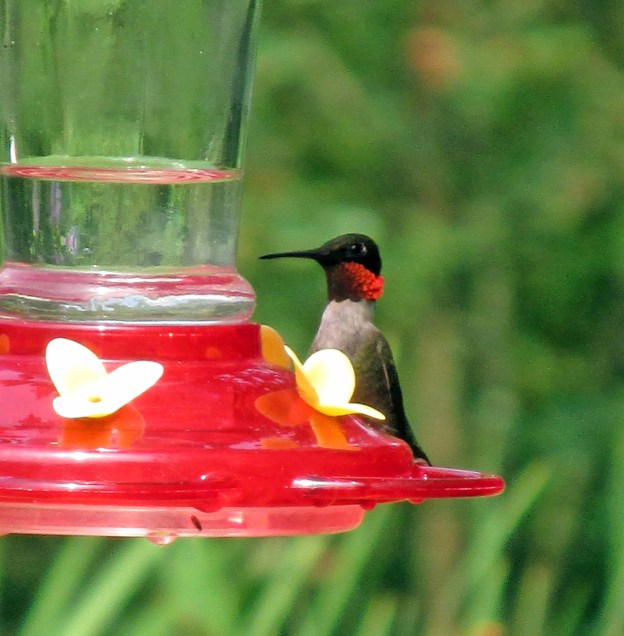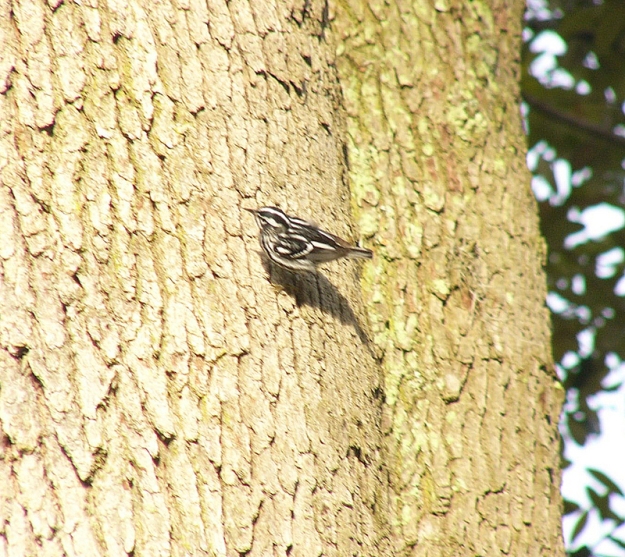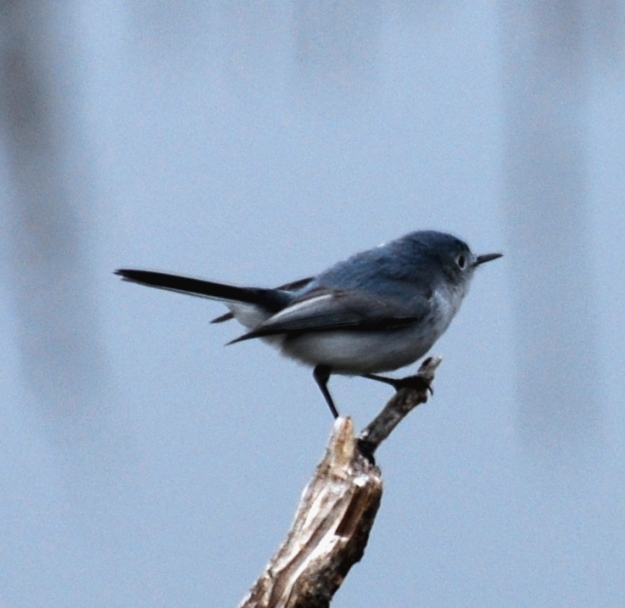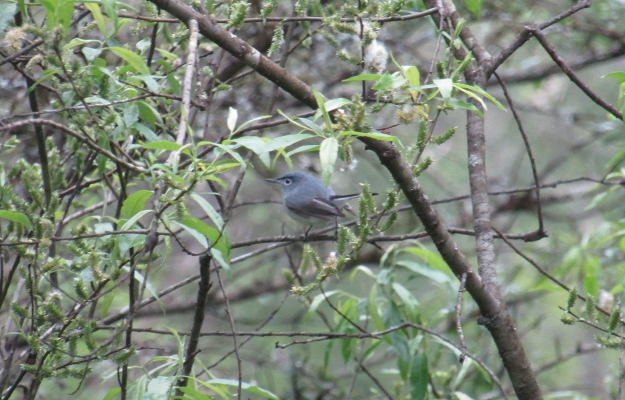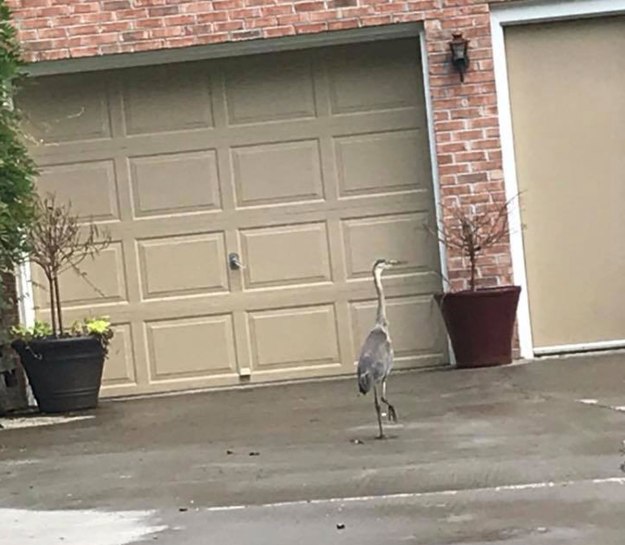
Photo by Pattie Rowland • A Great Blue Heron explores a paved driveway at a home in Erwin, Tennessee. Rookeries, or nesting colonies, in Erwin have expanded the population of this large wading bird locally.
Members of the Elizabethton Bird Club and birding organizations in Kingsport and Bristol fanned out across Northeast Tennessee on Saturday, May 5, for the 75th consecutive Elizabethton Spring Bird Count. A total of 60 observers (a new participation record) looked for birds in Tennessee’s Carter County and parts of the adjacent counties of Johnson, Sullivan, Unicoi and Washington.
Counts like this one, as well as surveys such as the Virginia Breeding Bird Atlas, now in its third season, provide valuable information to assist responsible agencies and organizations with the protection and preservation of the nation’s birds.
This year’s spring count tallied 152 species, slightly better than the overall average of 149 species established over the last 30 years. The most ever species tabulated for this count was 166 species back in 2016.
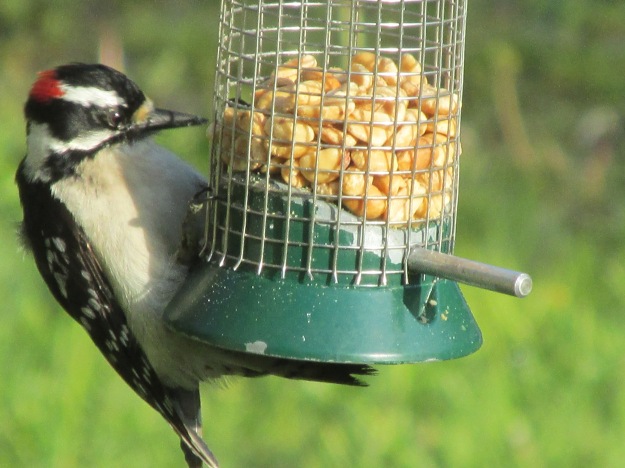
Photo by Bryan Stevens • Many of the birds found during a survey liked the Spring Bird Count are observed at feeders, such as was the case with this downy woodpecker.
I counted birds along the Watauga River in Elizabethton and on Holston Mountain. Some of the better birds I saw during the daylong outing included Baltimore oriole, Blackburnian warbler, warbling vireo, and yellow-billed cuckoo.
I also saw numerous great blue herons. It’s notable that this large wading bird has become much more common in the region, thanks to recent rookeries, or nesting sites, in Erwin, Elizabethton, Bristol and other locations. In recent years, new rookeries have also been established in southwest Virginia in locations such as Saltville and Damascus. A total of 123 great blue herons were found on this year’s spring count.
So it was with much interest that I read on my Facebook page the story of an encounter Pattie Rowland, a resident of Erwin, Tennessee, had with a rather tame great blue heron. Instead of flying away when Pattie stepped outside, a visiting heron strolled around her yard and down her neighbor’s driveway.
Pattie wondered if the heron could be a fledgling from the rookery in Erwin. While that’s certainly a possibility, the bird could also be an adult nesting in the rookery and wandering a little farther afield than usual in search of food for its young. In addition to fish, great blue herons will also feed on earthworms, amphibians, reptiles and even small rodents. As I mentioned to Pattie, herons are like people. Each bird is an individual; some are shy, others are curious and adventurous, which may find a heron exploring a paved driveway instead of a water lily-choked pond.

Photo by Bryan Stevens • Great blue herons have expanded their nesting range into the region.
This heron has only been known to nest in Unicoi County since 2007. In addition, count participants found 144 double-crested cormorants, another bird affiliated with water that has proliferated as a summer nesting bird in the region.
Despite the increasing numbers of great blue herons and double-crested cormorants, they were far from the most numerous bird found on the spring count. The European starling claimed the distinction of most abundant bird on this year’s count with a total of 921 individuals found. Other abundant birds included cliff swallow (864); American robin (844); Canada goose (648); red-winged blackbird (546); and American crow (377). Although the count produced many good birds, it was also notable for some misses, including Northern bobwhite, sharp-shinned hawk and Kentucky warbler.

Photo by Bryan Stevens • A male red-winged blackbird sings to attract mates and ward off rivals.
In the wild, great blue herons can live for 15 years. The great blue heron’s diet is often dictated by opportunity with these large birds known to feed on prey that ranges from fish and crustaceans to small alligators and baby turtles. These herons will also feed on insects, rodents, amphibians, reptiles and even nestling birds. A great blue heron will basically try to eat anything that it can capture and swallow.
The great blue heron is the largest North American heron, as well as the world’s third-largest heron species. Other herons around the world with descriptive common names include Goliath heron, black-headed heron, purple heron, zigzag heron, capped heron and whistling heron.
The great blue heron isn’t the only heron found in the region. Other herons that can be found locally include green heron, yellow-crowned night-heron and black-crowned night-heron, all of which were found on the recent bird count.
If you’re interested in observing great blue herons for yourself, consider visits to the wetlands at Sugar Hollow Park in Bristol, Virginia, or the waterways around Osceola Island Recreation Area near Holston Dam in Bristol, Tennessee. These herons can also often be found stalking fish, frogs and other prey around the edges of ponds or streams.
The official results of the Spring Bird Count by the Elizabethton Bird Club are presented below:
Canada goose, 648; wood duck, 70; mallard, 176; Northern shoveler, 1; greater scaup, 1; bufflehead, 1; and red-breasted merganser; 4.
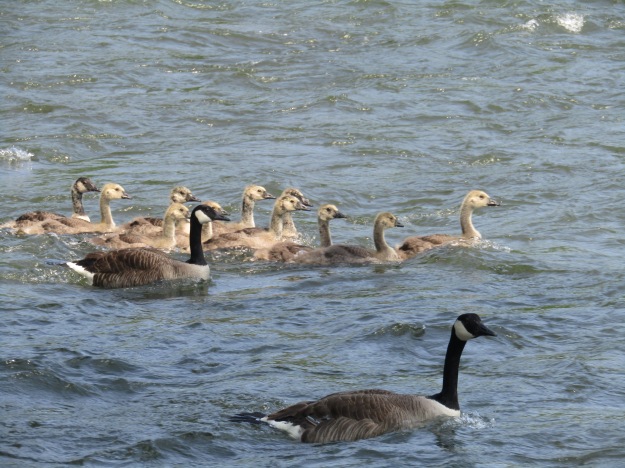
Photo by Bryan Stevens • A family of Canada geese swims in the Watauga River in Elizabethton, Tennessee.
Ruffed grouse, 4; wild turkey, 45; common loon, 5; double-crested cormorant,144; great blue heron, 123; great egret, 2; green heron, 29; black-crowned night-heron, 2; and yellow-crowned night-heron, 8.
Black vulture, 121; turkey vulture,167; osprey,12; bald eagle, 8; cooper’s hawk, 8; red-shouldered hawk, 2; broad-winged hawk, 8; and red-tailed hawk, 27.
Killdeer, 41; spotted sandpiper, 37; solitary sandpiper, 35; greater yellowlegs, 2; lesser yellowlegs, 8; least sandpiper, 10; white-rumped sandpiper, 1; and ring-billed gull, 2.

Photo by Bryan Stevens • Killdeer, a species of shorebird in the plover family, is a permanent resident in the region.
Rock pigeon, 217; Eurasian collared-dove,10; mourning dove, 251; yellow-billed cuckoo, 17; black-billed cuckoo, 3; Eastern screech-owl, 8; great horned owl, 2; barred owl, 8; common nighthawk, 5; chuck-will’s-widow, 7; Eastern whip-poor-will, 43; chimney swift, 185; ruby-throated hummingbird, 51; and belted kingfisher, 15.
Red-headed woodpecker,10; red-bellied woodpecker, 129; yellow-bellied sapsucker, 5; downy woodpecker, 55; hairy woodpecker, 6; Northern flicker, 44; and pileated woodpecker, 59.
American kestrel, 19; Eastern wood-pewee, 43; Acadian flycatcher, 32; least flycatcher, 2; Eastern phoebe, 82; great crested flycatcher, 31; Eastern kingbird, 123; and loggerhead shrike, 1.
White-eyed vireo, 21; yellow-throated vireo,10; blue-headed vireo, 86; warbling vireo, 17; red-eyed vireo, 280; blue jay, 231; American crow, 377; fish crow, 2; and common raven, 22.
Purple martin, 82; tree swallow 206; Northern rough-winged swallow, 131; barn swallow, 226; and cliff swallow, 864.
Carolina chickadee, 197; tufted titmouse, 213; red-breasted nuthatch, 11; white-breasted nuthatch, 44; brown creeper, 3; house wren, 53; winter wren, 7; Carolina wren, 225; blue-gray gnatcatcher, 110; golden-crowned kinglet, 5; and ruby-crowned kinglet, 2.
Eastern bluebird,181; veery, 15; gray-cheeked thrush, 1; Swainson’s thrush, 3; wood thrush, 109; American robin, 844; gray catbird, 77; brown thrasher, 72; Northern mockingbird, 138; European starling, 921; and cedar waxwing, 144.
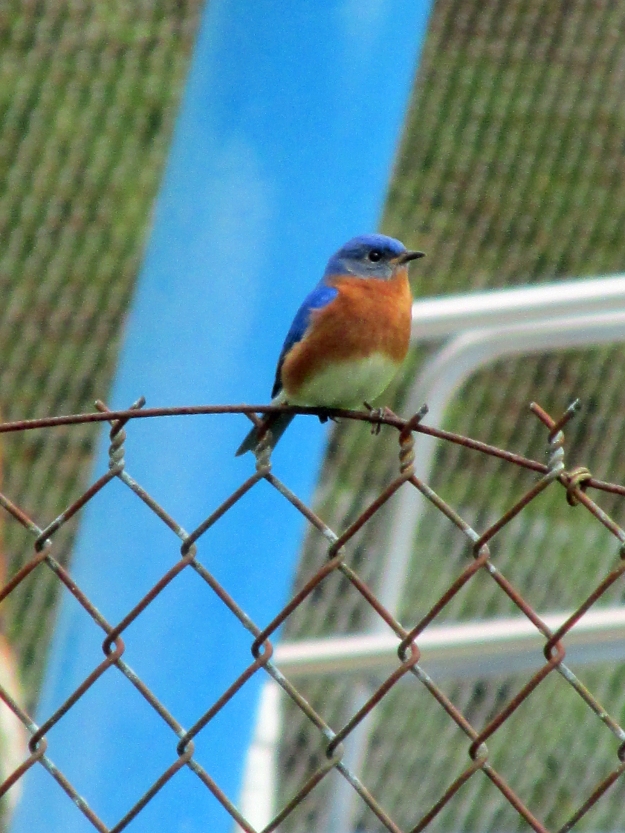
Photo by Bryan Stevens • A handsome male Eastern bluebird perches on a chain-link fence.
Ovenbird, 170; worm-eating warbler, 42; Louisiana waterthrush, 37; Northern waterthrush, 3; golden-winged warbler, 2; black-and-white warbler, 118; Swainson’s warbler, 3; Tennessee warbler, 1; common yellowthroat, 23; hooded warbler, 192; American redstart,12; Cape May warbler, 4; Northern parula, 44; magnolia warbler 7; Blackburnian warbler, 11; yellow warbler, 34; chestnut-sided warbler, 18; blackpoll warbler, 5; black-throated blue warbler, 71; palm warbler, 5; pine warbler, 13; yellow-rumped warbler, 53; yellow-throated warbler, 43; prairie warbler, 14; black-throated green warbler, 97; and Canada warbler, 34.
Eastern towhee, 250; chipping sparrow,137; field sparrow, 74; savannah sparrow, 2; grasshopper sparrow, 4; song sparrow,322; swamp sparrow, 1; white-throated sparrow, 10; white-crowned sparrow, 7; and dark-eyed junco, 74.
Summer tanager, 3; scarlet tanager, 97; Northern cardinal, 376; rose-breasted grosbeak, 37; blue grosbeak, 6; indigo bunting, 148; dickcissel, 2; and yellow-breasted chat, 10.
Bobolink,16; red-winged blackbird, 546; Eastern meadowlark, 144; common grackle, 474; brown-headed cowbird, 144; orchard oriole, 28; Baltimore oriole, 35; house finch, 96; pine siskin, 79; American goldfinch, 382; and house sparrow, 47.
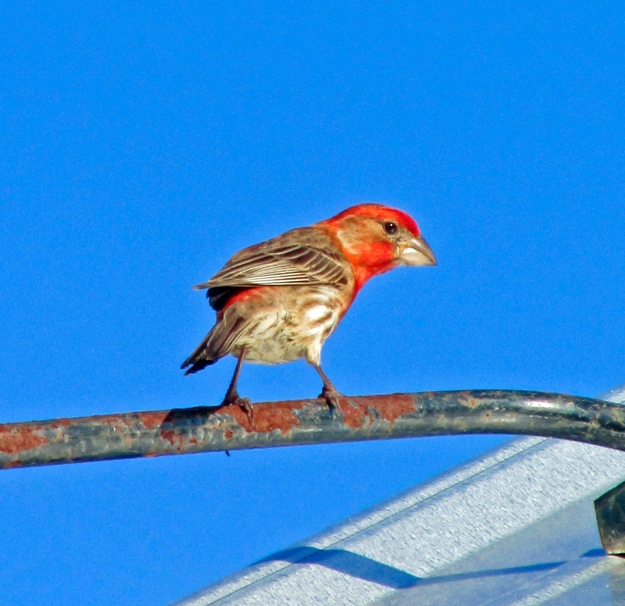
Photo by Bryan Stevens • A male house finch perched on a cable. These finches are native to the western United States but became established in the eastern states thanks to the illicit pet trade.






